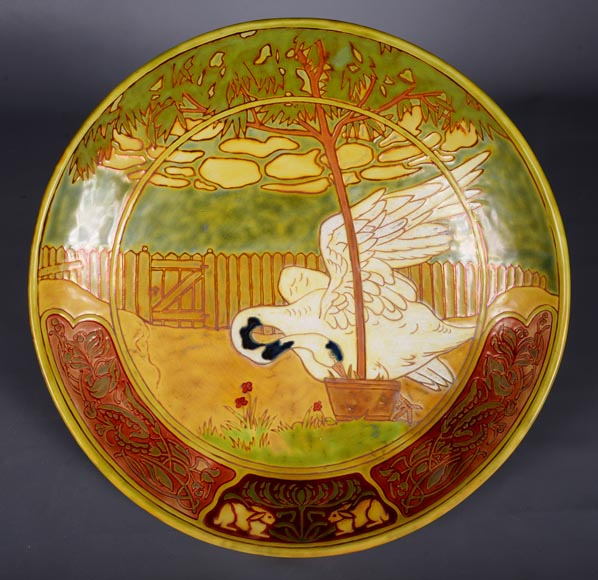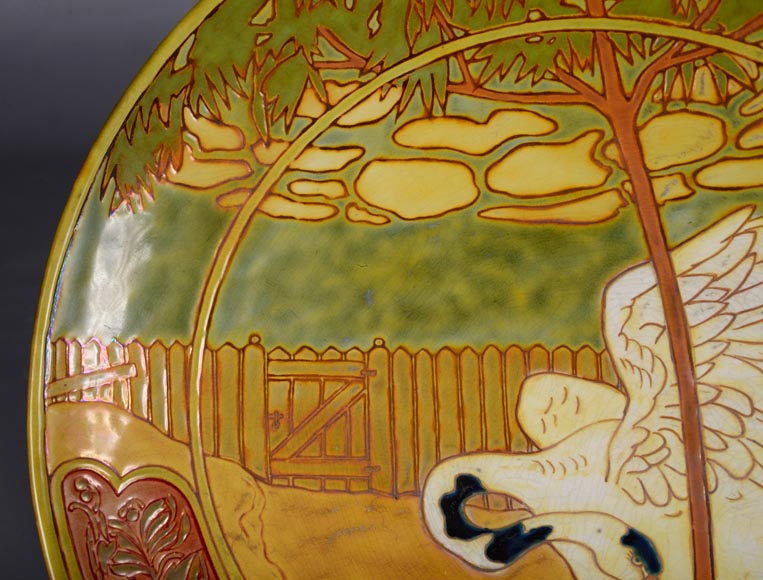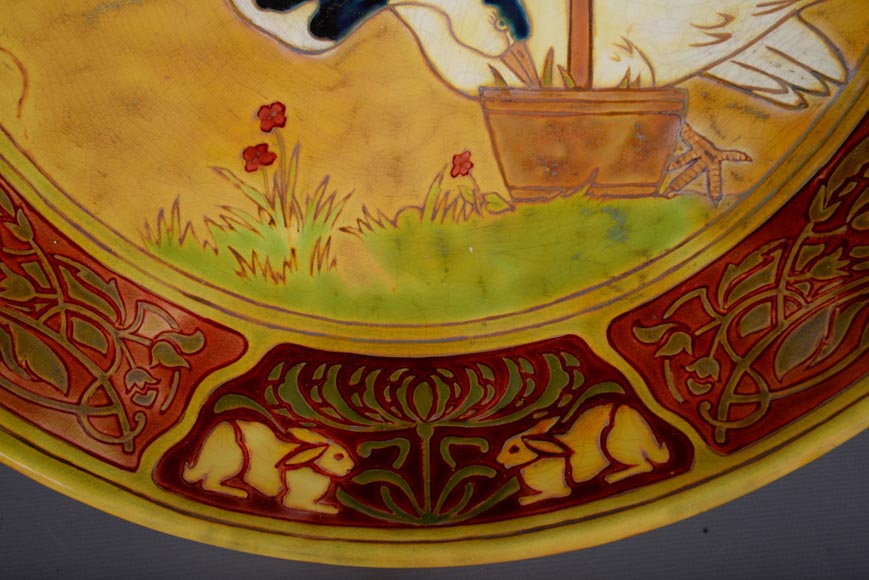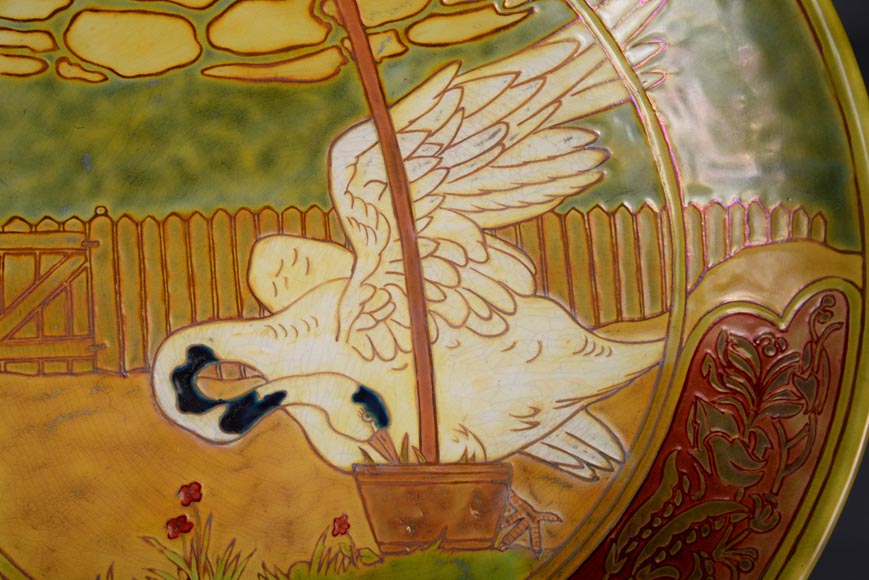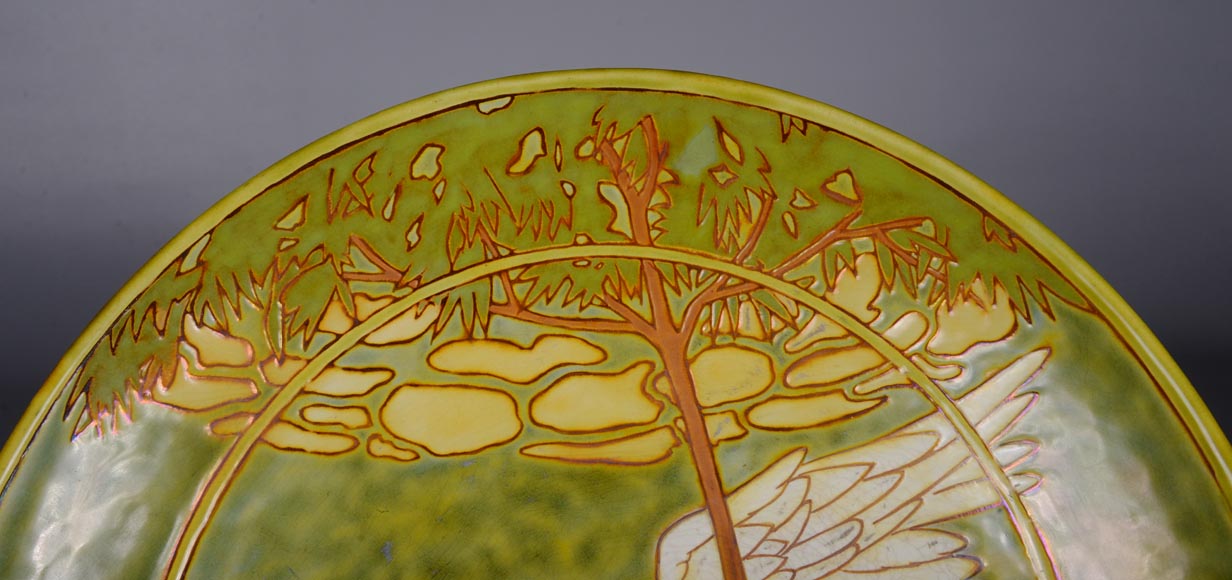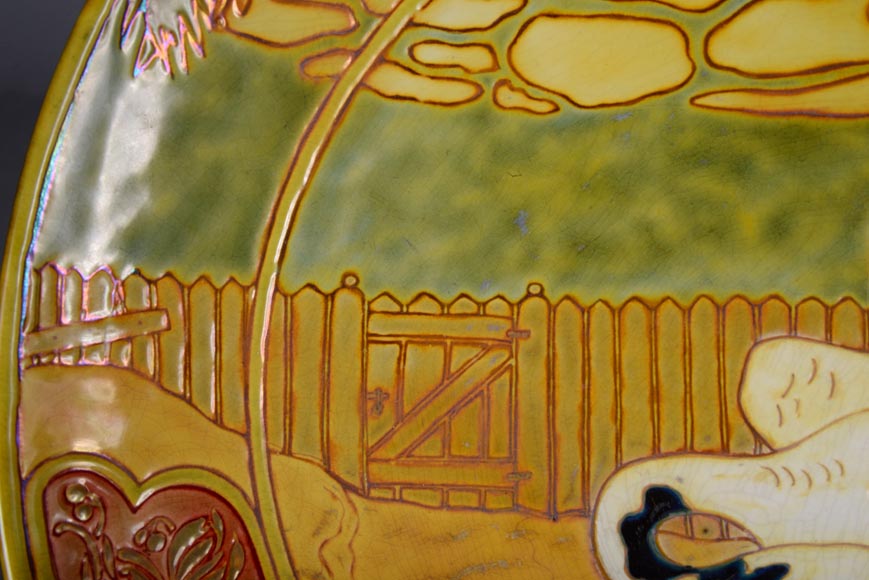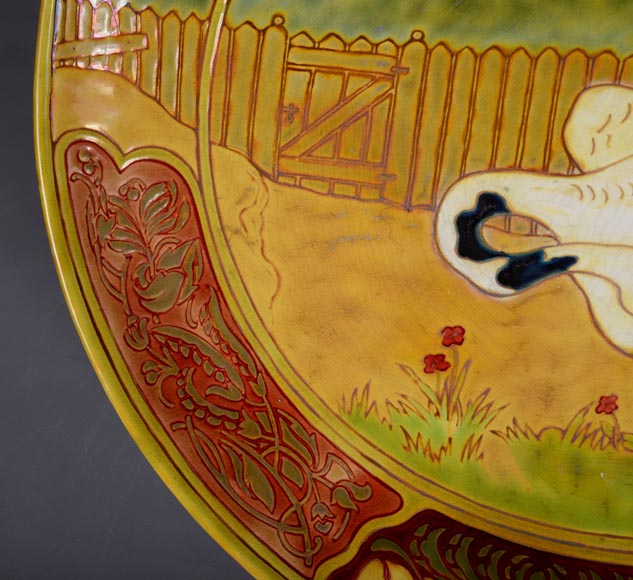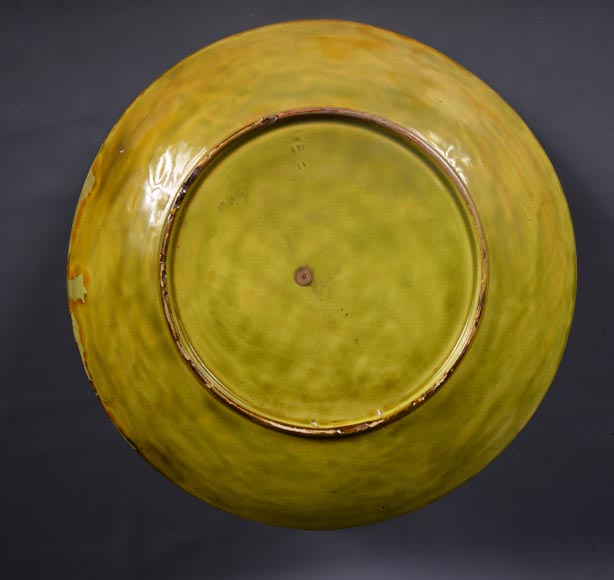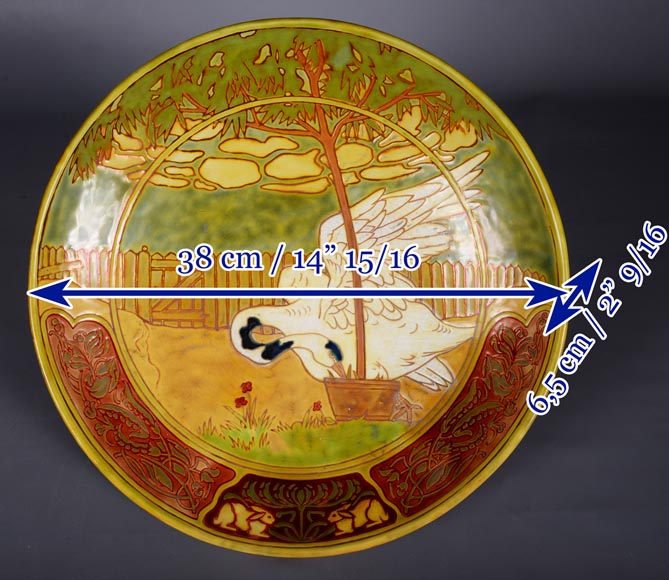Style Other / Ref.13024
VILMOS ZSOLNAY (attributed to), Earthenware plate with a swan decoration, late 19th century
Dimensions
Width 15'' 38cm
Height 15'' 38cm
Depth: 2'' ⅜ 6cm
diameter: 15'' 38cm
Origin:
19th century.
This round earthenware plate is attributed to Vilmos Zsolnay (1828-1900) because of its decoration and the trace of signature on the back. It was made in the late 19th century. The polychrome decoration of this plate depicts a swan in a countryside landscape. The white color of its feathers, and its spotted in black neck are detached from the background colored with hot shades. We can see, indeed, an ocher ground lit up with a small grass area and a gate in the background. The swan is plunging its beak in a pot where it is growing a tree of which the leaves and branches fit closely the upper part of the plate. The blue sky, tainted with green, is covered with small and stylized clouds. The Lower part of the plate also depicts two Art Nouveau scrolls friezes inhabited with plants and flowers, framing two small rabbits. The history of the Zsolnay manufactory starts in 1853, inPécs in Hungary on Miklos Zsolnay’s (1800-1880) initiative. During ten years, beautiful pieces were created, but Vilmos Zsolnay, the founder’s son, becomes manager and decides transform the familial business into an art manufactory with an international renown, by producing innovative pieces and participating to the big exhibitions that rhythm the second half of the 19th century. Indeed, he participated in the International Exhibition of Vienna in 1873, where his creativity was noticed, then the one in Paris, in 1878, where he won a Gold medal. Innovator, he creates in 1893, ceramic pieces covered with eosine – high quality varnish that gives to earthenware an iridescent metallic appearance – thanks to which he wins the Légion d’honneur, and which still stays today typical of his production.The manufactory somehow resists to the events that mark the first half of the 20th century, such as the two World War or event the 1930’s crisis. Nevertheless, it was nationalized in1948, under the communist regime that asked to destroy the most prestigious art pieces and their moldings. The manufactory has to wait until the end of the 20th century to find again its independence and original name.
Informations
Price: on request
Recommended for you :
Dimensions:
Width: 40
Height: 78
Depth: 24
Dimensions:
Height: 10
Diameter: 36
Dimensions:
Height: 4
Diameter: 30
Dimensions:
Height: 4
Diameter: 30
Dimensions:
Height: 26
Diameter: 36
Dimensions:
Height: 55
Diameter: 24
Dimensions:
Width: 52
Depth: 52
Diameter: 52
Dimensions:
Width: 20
Height: 34
Depth: 13
Dimensions:
Width: 22
Height: 76
Depth: 22
Dimensions:
Width: 72
Height: 164
Depth: 11
Dimensions:
Width: 34
Height: 12
Depth: 34
Dimensions:
Height: 9
Diameter: 32



